Ever notice how some homes just have that extra something?
Often, it’s all in the details, and dormers are among those that make a real difference.
These windowed projections that pop out from sloped roofs do way more than look pretty. They change dark, cramped attic spaces into bright, livable rooms.
They add character and charm to your home’s exterior. And honestly? The right dormer can completely change how your house feels, both inside and out.
Whether you’re planning a renovation or just curious about home architecture, understanding the different types of dormers helps you appreciate what makes each home unique.
Let’s dig into the options and find what might work best for your space.
Why Dormers Matter in Home Architecture?
Dormers are those windowed projections that pop out from a sloped roof. They’re architectural features that add both style and function to homes.
These charming additions do more than just look nice; they completely transform how a home feels, inside and out.
A well-placed dormer floods dark attic spaces with natural light and fresh air. It creates actual headroom where you’d otherwise be dodging ceiling slopes. That cramped attic suddenly becomes a cozy bedroom or home office.
Style-wise, dormers are incredibly versatile. They can give a cottage that storybook charm or add clean lines to a contemporary build.
Traditional homes often feature multiple dormers for symmetry, while modern designs might use a single dramatic one as a focal point.
Here’s the thing: the right dormer makes your entire home feel more welcoming and balanced. It’s that perfect blend of beauty meeting practicality.
Types of Dormers
Each dormer style brings its own personality and practical advantages to a home. Let’s explore the most popular types and what makes each one unique.
1. Gable Dormer
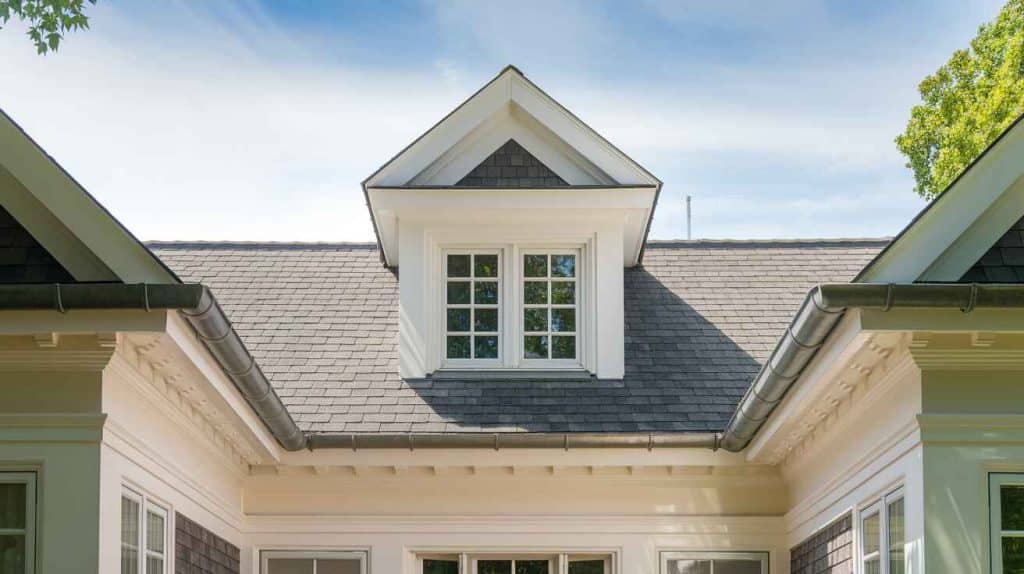
The gable dormer features a classic triangular shape that echoes your main roof’s pitch. It’s the go-to choice for Colonial, Cape Cod, and Tudor homes, creating that timeless, symmetrical look homeowners love.
This style adds vertical space and works beautifully when you want traditional curb appeal.
| Pros | Cons |
|---|---|
|
|
2. Shed Dormer
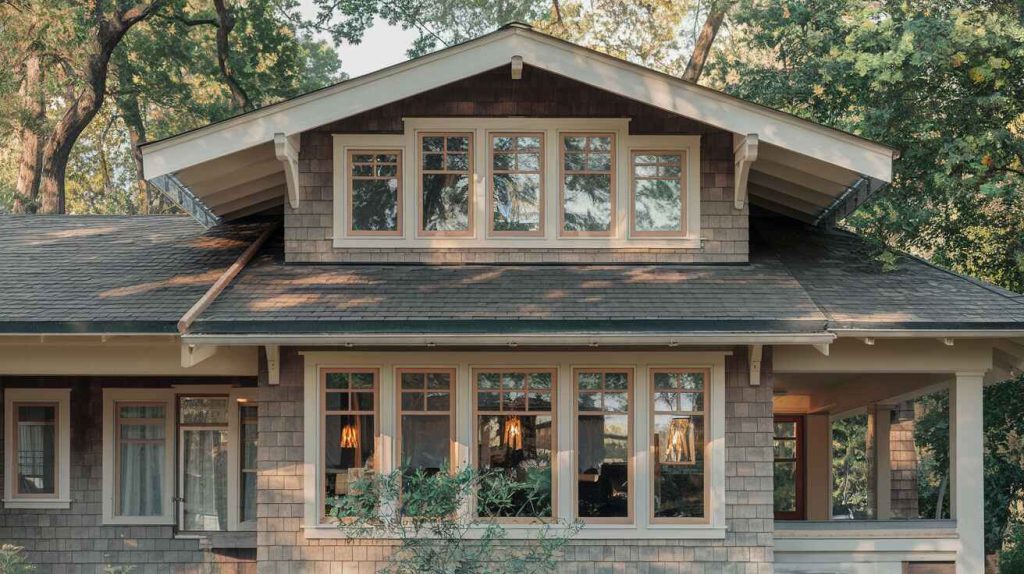
A shed dormer sports a single sloped roof that angles away from the house. It’s incredibly practical, offering the most interior space of any dormer type.
Bungalows and Craftsman-style homes frequently use shed dormers to convert attics into full living areas.
| Pros | Cons |
|---|---|
|
|
3. Hip Dormer
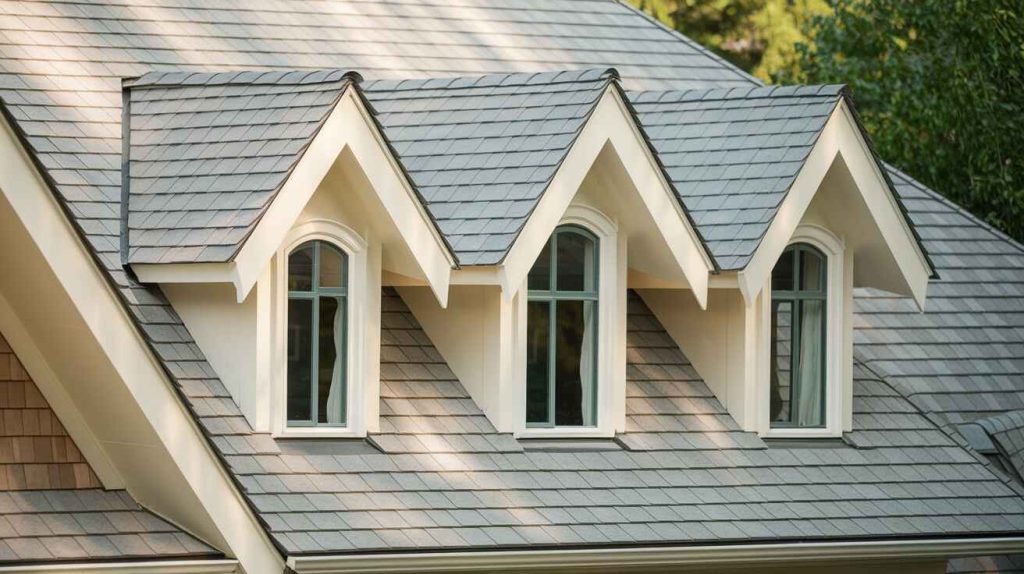
The hip dormer features three sloping sides that converge at the top, creating a pyramid-like shape. It offers a softer, more rounded profile than the angular gable.
This style works exceptionally well on homes that already incorporate hip roof structures.
| Pros | Cons |
|---|---|
|
|
4. Eyebrow Dormer
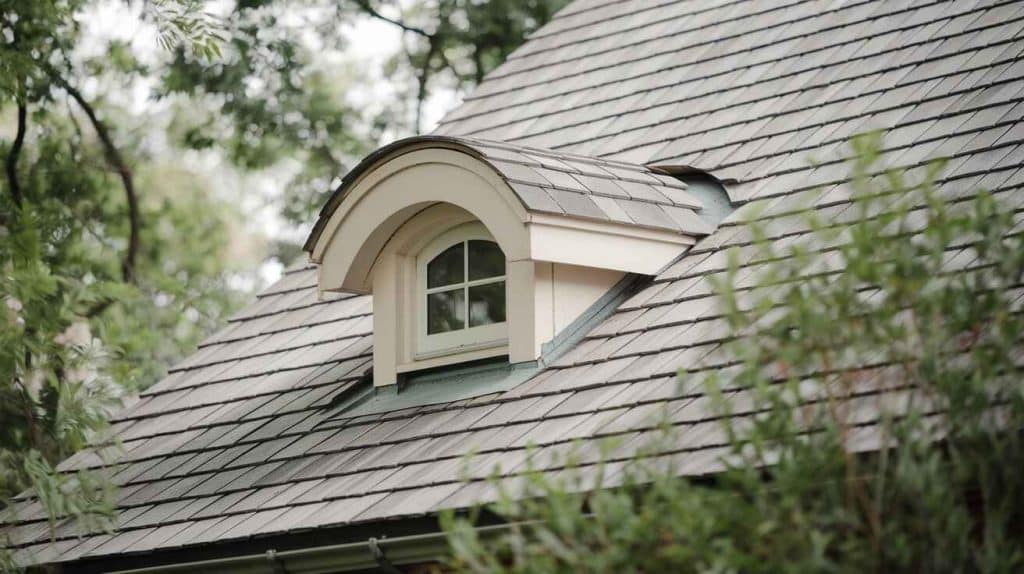
The eyebrow dormer curves gently along the roofline like a raised brow. It’s more decorative than functional, adding whimsical character without dramatically altering your roof structure.
Cottage-style and coastal homes often feature these charming additions.
| Pros | Cons |
|---|---|
|
|
5. Segmental (Arched) Dormer
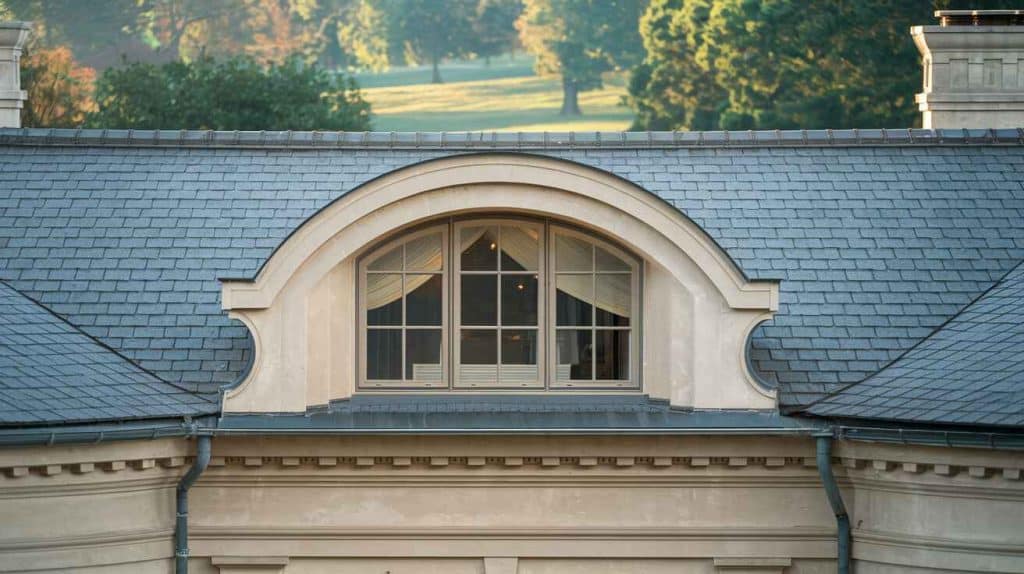
Recognizable by its graceful semi-circular arch at the top, this dormer exudes elegance.
The curved design softens the roofline while adding a touch of Old World sophistication. It’s a favorite for European-inspired and historic revival homes.
| Pros | Cons |
|---|---|
|
|
6. Wall Dormer

The wall dormer rises vertically from your home’s exterior wall rather than breaking through the roofline.
It creates a bold architectural statement and essentially adds an extra “mini-floor” to that section. Modern and transitional homes use wall dormers to make striking design statements.
| Pros | Cons |
|---|---|
|
|
7. Flat Roof Dormer
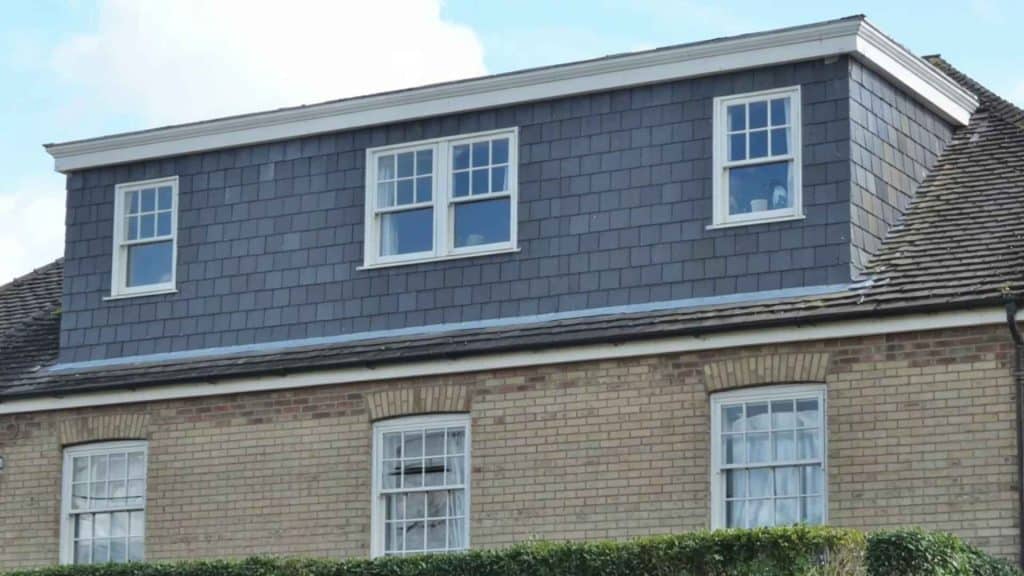
This dormer features a horizontal top with straight vertical sides, creating clean lines and maximum efficiency.
It’s the most space-savvy option for urban homes and loft conversions where every square foot counts. The minimalist profile suits modern aesthetics perfectly.
| Pros | Cons |
|---|---|
|
|
How to Choose the Right Dormer for Your Home?
Picking the right dormer isn’t just about aesthetics, it’s about matching form with function while staying true to your home’s character.
- Are you adding livable space or just boosting curb appeal? Shed or gable dormers maximize headroom for conversions, while eyebrow dormers add charm without major structural work.
- Match your home’s architectural style. Traditional homes shine with gable or segmental dormers. Craftsman bungalows pair naturally with shed styles. Modern designs call for flat roof or wall dormers.
- Consider your roof type. Steeply pitched roofs handle dramatic gable or shed dormers. Lower slopes work better with shed or flat styles. Hip roofs naturally complement hip dormers.
- Factor in your budget and maintenance reality. Simpler designs cost less upfront and maintain easier. Curved or custom dormers demand higher budgets and ongoing attention.
- Think about your climate. Snowy regions benefit from steeply pitched dormers. High-wind areas favor hip dormers. Hot climates need dormers that maximize ventilation without trapping heat.
Think about what story you want your roof to tell, bold, classic, or quietly charming. Your dormer choice shapes how your home feels from the street and how comfortably you live inside it.
Conclusion
Choosing the right dormer comes down to knowing what you need and what fits your home’s personality.
Maybe you’re after maximum space for that attic conversion. Or perhaps you want subtle charm that doesn’t overpower your roofline. Either way, there’s a dormer style that’ll work perfectly for your situation.
The beauty of dormers is how they blend practicality with style. They solve real problems, dark rooms, low ceilings, limited space, while adding architectural interest that makes your home stand out.
Ready to change your roofline?
Talk to a qualified architect or contractor about which dormer type suits your home best.
They’ll help you navigate local codes, assess your roof structure, and bring your vision to life. Your home’s next chapter starts with that conversation.


